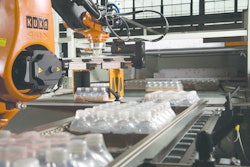
I recently received a call from a major retailer, requesting a presentation addressing automation in the grocery industry. Offering a strong background in grocery and automation, I welcomed the invitation but asked that we answer a few questions together as I needed to better understand what was driving the automation decision. I quickly produced five critical questions that I knew would help prepare my slide deck – they are as follows:
1. Did they feel competitive pressures from another grocer in their region automating?
2. Were they considering network consolidation / optimization?
3. Was the growing SKU count inside the distribution center requiring ways to store and pick more in the same footprint?
4. Do they want to reduce order cycle time while making more inventory turns and become "nimble"?
5. Were they trying to increase the service level and quality to their customer – the Retail Store?
The gentleman said "yes" to the above questions, but went on to say "The primary reason we want to consider automation is that the average length of employment of our workforce in the DC is 25+ years. We have loyal, dedicated employees who are very efficient, but will be retiring soon. Today's workers are not interested in working in a distribution environment, though there are opportunities to advance to other positions within the company. We believe that in 5 to 7 years from now, we won't be able to fill the positions needed to process orders. In fact, some of the young people hired today do not stick around long enough, even though we offer great pay and benefits. As a result, we are spending more money on hiring & training, offering wellness/lifestyle courses, day care and a fitness center."
I immediately researched his current challenge of an aging workforce and discovered the U.S. birth rate is continuing a 12 year decline. Monthly Labor Review published an article about Labor Force Projections for 2018. In 1998, 71.5 percent of the workforce was comprised of people 25 – 54 years of age. In 2018, the projection is 63.5 percent for ages 25 – 54 and trending downward.
After our meeting, I pondered the gentleman's statement and realized that the "5 to 7 years from now" is upon us today. Will the U.S. have sufficient labor to sustain business requirements? Young workers will either have a choice of working in a distribution center, or sitting in front of a monitor. What do you think most people will choose? Monitor of course.
As automated solutions can tackle the questions above, they are becoming justifiable and accepted in distribution operations. We are seeing different uses of automated material handling systems from traditional storage and retrieval, to sorting, sequencing and building a store friendly/aisle ready pallet. Automation can complement the "graying" of the workforce.




















